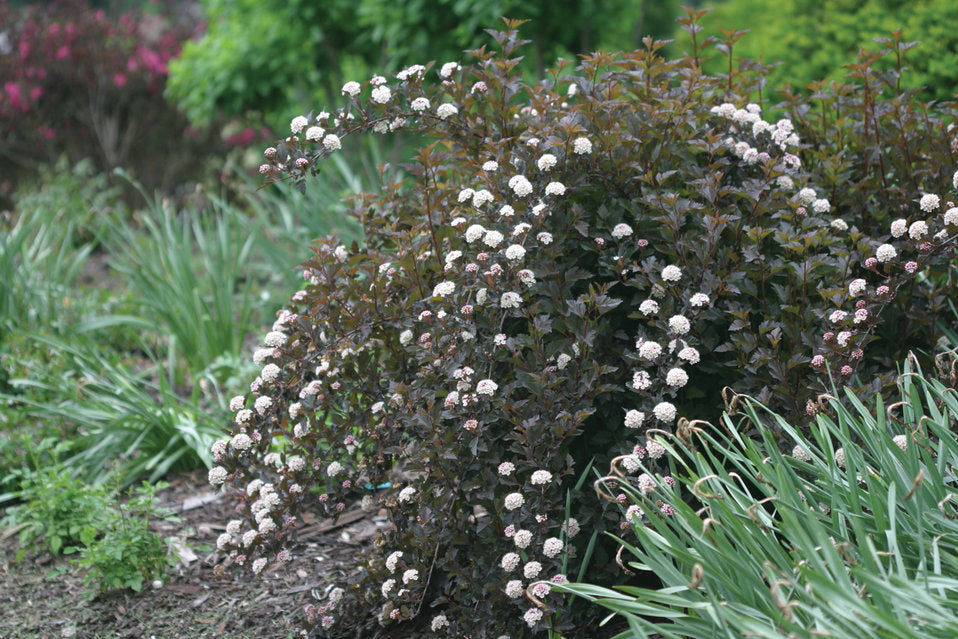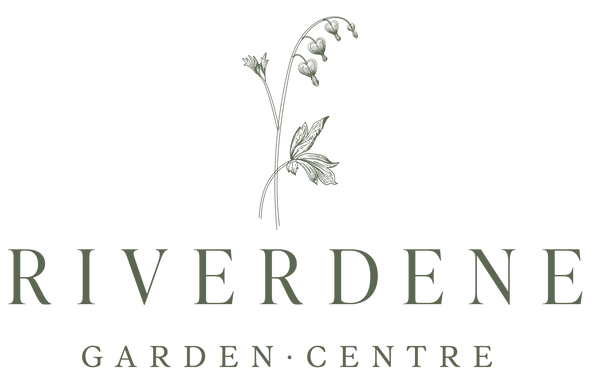Riverdene Garden Center
Summer Wine Ninebark
Summer Wine Ninebark
Couldn't load pickup availability
Physocarpus opulifolius ‘Summer Wine’
Summer Wine® Ninebark is a cold-hardy, disease-resistant deciduous shrub known for its deep burgundy foliage, cascading branches, and clusters of soft pink-white flowers in spring. It is low-maintenance, drought-tolerant, and adaptable, making it an excellent choice for hedges, specimen plantings, and mixed borders in Southwest Saskatchewan.
Planting & Location
- Hardiness Zone: 3-7 (extremely winter-hardy, ideal for prairie climates)
- Mature Size: 5-6 feet tall, 5-6 feet wide
- Growth Rate: Fast (12-24 inches per year)
- Sunlight Needs: Full sun to partial shade (best foliage color in 6+ hours of direct sun)
-
Soil Preference:
- Prefers well-drained, loamy soil.
- Tolerates clay, sandy, and slightly alkaline soils.
- Avoid standing water, as it does not tolerate wet feet.
- Spacing: 5-6 feet apart for hedging, 7+ feet apart for individual shrubs.
Watering
- Young Plants (First Year): Water deeply 1-2 times per week to establish roots.
- Established Shrubs: Drought-tolerant; water weekly in dry conditions.
- Avoid Overwatering: Prefers moderate soil moisture but does not like soggy soil.
Fertilizing
- First Year: No fertilizer needed—focus on root establishment.
-
Mature Shrubs:
- Apply a balanced slow-release fertilizer (e.g., 10-10-10) in early spring to encourage healthy growth.
- Organic alternative: Compost or well-rotted manure in spring.
Pruning & Maintenance
- Best Time to Prune: Late winter to early spring, before new growth starts.
-
How to Prune:
- Remove dead, damaged, or weak branches to improve airflow and reduce disease risk.
- Cut back by one-third in early spring to maintain shape and encourage bushy growth.
- Older shrubs can be rejuvenated by cutting back to 12-18 inches above ground every 3-4 years.
Flowers, Foliage & Seasonal Interest
- Bloom Time: Late spring to early summer (May-June)
- Flower Color: Soft pink to white clusters contrast beautifully with dark foliage
-
Foliage:
- Spring & Summer: Rich burgundy to deep wine-colored leaves
- Fall: Leaves turn coppery-red before dropping
- Bark: Peeling, cinnamon-colored bark provides winter interest
Pest & Disease Management
Resistant to: Drought, deer, urban pollution, and most pests
Common Pests:
-
Aphids – May cause curled leaves and sticky honeydew.
- Solution: Spray with insecticidal soap or introduce ladybugs.
-
Spider Mites – Can cause leaf discoloration in hot, dry conditions.
- Solution: Hose off with water or use insecticidal soap.
Common Diseases:
-
Powdery Mildew – White fungal coating on leaves in humid conditions.
- Solution: Improve airflow and apply fungicide if needed.
-
Leaf Spot (Fungal or Bacterial) – Causes brown spots on foliage.
- Solution: Avoid overhead watering and remove infected leaves.
Winter Protection
- Highly winter-hardy—no special protection needed.
- Mulching: Apply 2-4 inches of mulch around the base (not touching the stems) to insulate roots.
- Rodent & Deer Protection: Generally resistant to deer, but young plants may need protection from rabbits.
Landscape Uses
Great for specimen plantings, hedges, and foundation plantings
Rich burgundy foliage provides season-long color contrast
Low-maintenance and easy to grow
Attracts pollinators and provides year-round interest
Works well in cottage gardens, modern landscapes, and mass plantings
Additional Notes:
- Summer Wine® Ninebark is one of the best ornamental shrubs for adding bold foliage color, offering three-season interest with minimal care.
- Lifespan: 20+ years with proper care.
- Works well in mixed borders, rain gardens, mass plantings, and as a specimen shrub.
Photo courtesy of Proven Winners
Share


